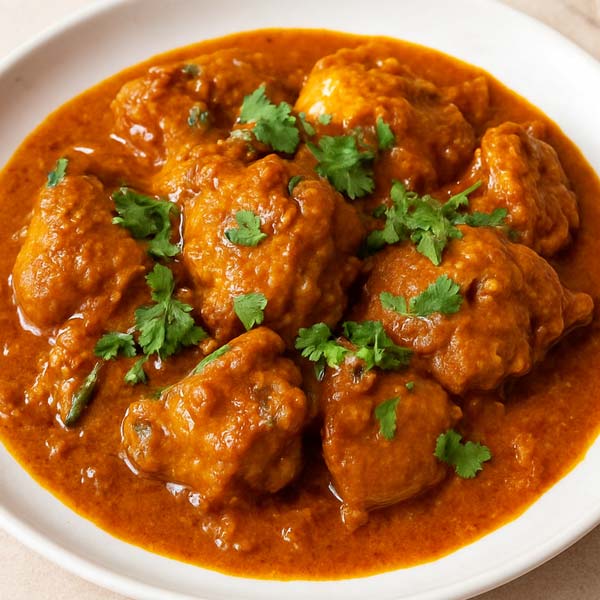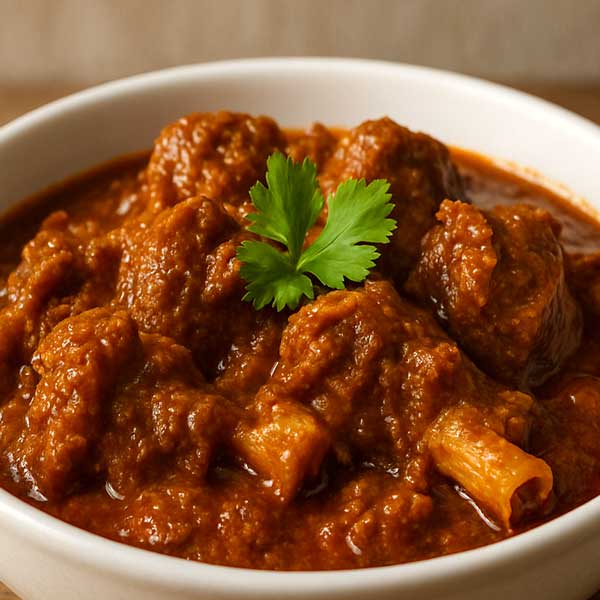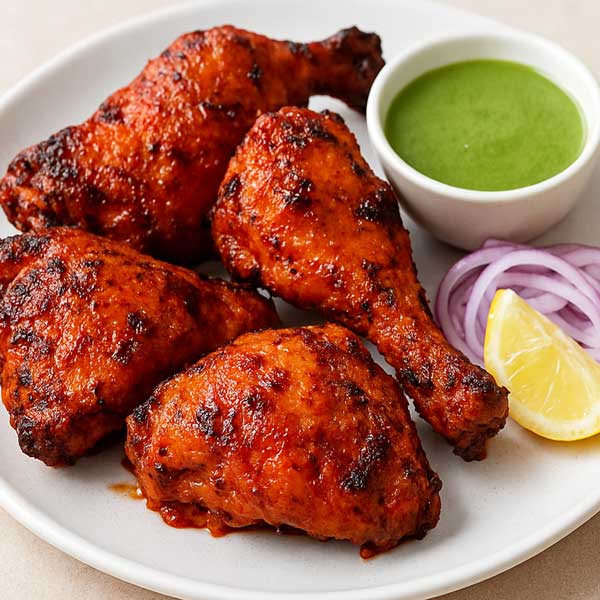Goan Fish Curry Recipe (Indian Fish Curry)
Learn how to make authentic Goan Fish Curry at home in under 40 minutes with this easy step-by-step recipe. It is a traditional Indian fish curry full of coconut, spice, and coastal flavor, just like in a Goan kitchen.
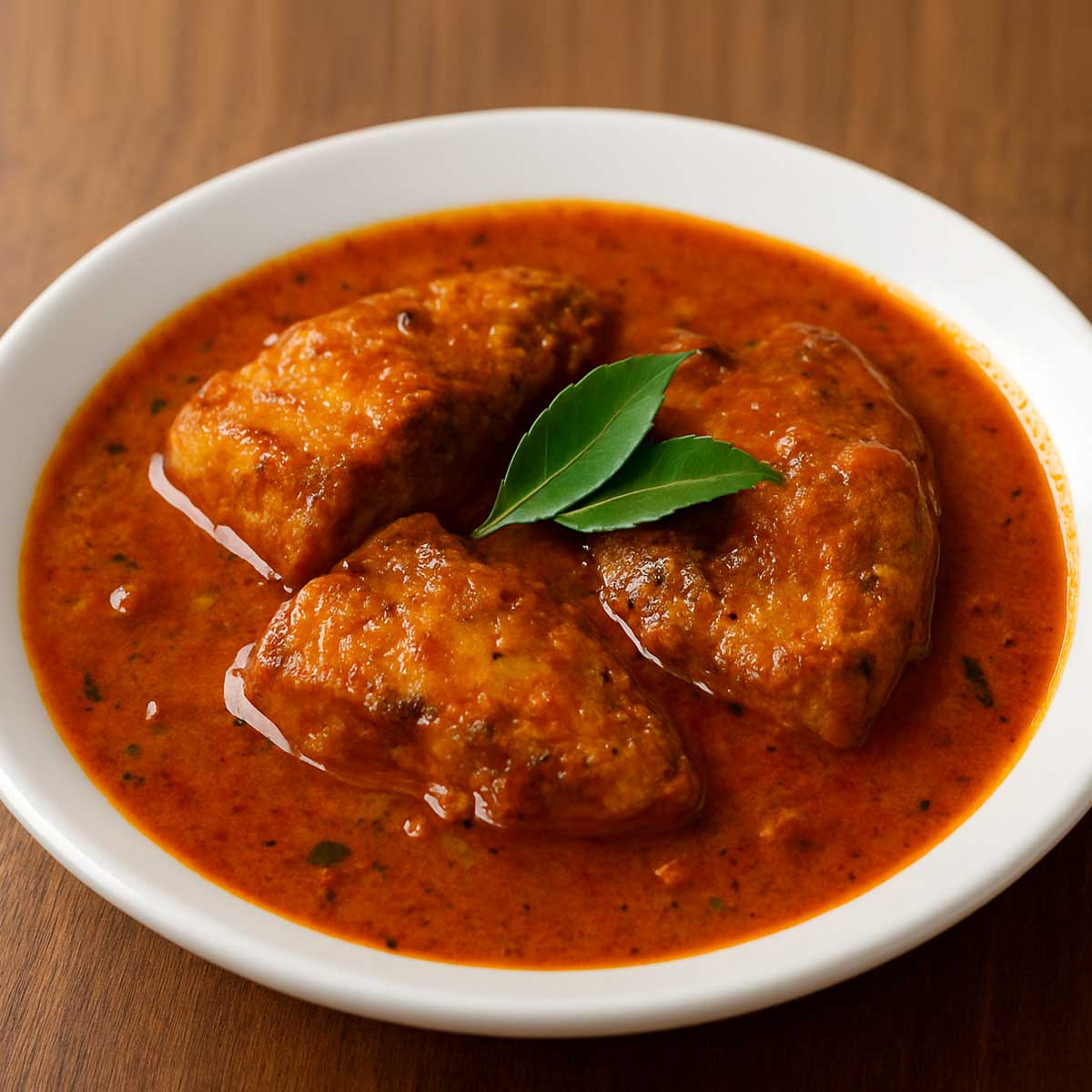
Goan Fish Curry is an Indian seafood dish from Goa, a coastal state in India. It’s one of the most popular Goan seafood curry recipes known for its rich, tangy, and flavorful dish made with fresh fish, grated coconut, and a homemade blend of roasted spices. It’s a perfect example of a healthy Indian non-vegetarian recipe that’s both comforting and easy to prepare. Whether you use kingfish, pomfret, or any firm white fish, this fish curry pairs perfectly with steamed rice for a wholesome, it makes a satisfying and wholesome Indian lunch or dinner. It is a must-try coastal Indian cuisine and can be stored for up to 2 days in an airtight container. If you love authentic Goan flavors, you might also enjoy Goan Chicken Cafreal, a vibrant green chicken curry packed with fresh herbs and spice.
Ingredients and Substitutes
- Fish: I usually go for kingfish, pomfret, or mackerel because they hold their shape well and have that coastal flavor. You can use 500g of fish but if I don’t have these, any firm white fish like tilapia or snapper works too.
- Coconut oil: Coconut oil gives that authentic Goan touch and aroma. If it’s not handy, I just use any regular cooking oil like sunflower or vegetable oil.
- Onions: This adds sweetness and depth to the base. I prefer red onion, but white or yellow ones also do the job.
- Tomatoes: I add tomato for a bit of tang and to give body to the gravy. Sometimes I use canned tomato if I’m out of fresh.
- Coconut milk: This is what makes the curry rich and creamy. I use fresh coconut milk when possible, but canned coconut milk works just fine.
- Water: I add water to adjust the consistency of the gravy. If I want extra flavor, I sometimes use light fish stock or even coconut water.
- Tamarind Pulp: This adds that essential tangy-sour taste. If I’m out of tamarind, I sometimes use a bit of lemon juice or amchur (dry mango powder).
- Fresh Coriander Leaves: I sprinkle chopped coriander on top for freshness. If I don’t have any, a bit of parsley can work, but the taste is different.
- Grated Coconut: This goes into the masala paste and adds texture and flavor. Fresh or frozen coconut is best, but I soak dry desiccated coconut if I don’t have the other two.
- Green and Red Chilies: These are what bring life to the curry. I use green chilies for a gentle, fresh heat and red chilies for deeper spice and color. The balance depends on how spicy I want it. Sometimes I go for Kashmiri red chilies when I want a milder version with that rich red hue.
- Coriander Seeds: I roast and blend these into the masala, they add warmth and a citrusy hint. Ground coriander can be used in a pinch.
- Cumin Seeds: These give an earthy touch. If I’m in a rush, I use ground cumin.
- Garlic Cloves: Garlic adds depth and punch. Sometimes I just use garlic paste when I’m short on time.
- Ginger: A piece of ginger brings heat and freshness. You can also use ginger paste about ½ teaspoon.
- Powerded Spices: I always include a mix of turmeric powder, red chili powder for a balanced flavor. Turmeric gives that golden color and warmth, red chili powder adds spice and depth. I often mix Kashmiri chili with paprika for color. This gives color and that earthy, warm flavor. It’s essential.
- Kokum Rinds: These give that classic Goan sourness. If I don’t have kokum, I just use a little extra tamarind.
- Sichuan Pepper: It adds a slight zing and a lemony-spicy note. If I don’t have it, I sometimes use a few black peppercorns, though it’s not exactly the same.
- Salt: I adjust salt towards the end to bring everything together. Any regular salt works fine.
How to Make Goan Fish Curry
- Prepare Goan Fish. Clean and cut the fish into medium pieces, using firm white varieties like kingfish, pomfret, or tilapia for authentic Goan flavor.
- Marinate the fish for Goan curry. Coat the pieces with salt and turmeric powder, then let them rest so the flavors absorb well.
- Make tamarind pulp. Soak tamarind in warm water, mash it, and strain to get the tangy extract that gives this curry its signature coastal taste.
- Grind Goan curry masala. Blend grated coconut, dried red chilies, coriander seeds, cumin, garlic, ginger, turmeric, tamarind pulp, and chili powder into a smooth aromatic paste.
- Cook Goan curry base. Heat coconut oil in a pan, add the fresh masala paste, and sauté until it turns fragrant and slightly thick.
- Add fish to Goan coconut curry. Mix in kokum, Sichuan pepper, and salt, then gently place the marinated fish and simmer until perfectly tender.
- Serve Goan fish curry. Garnish with fresh coriander or sliced green chilies and serve hot with steamed rice or Goan poi bread for a complete coastal meal.
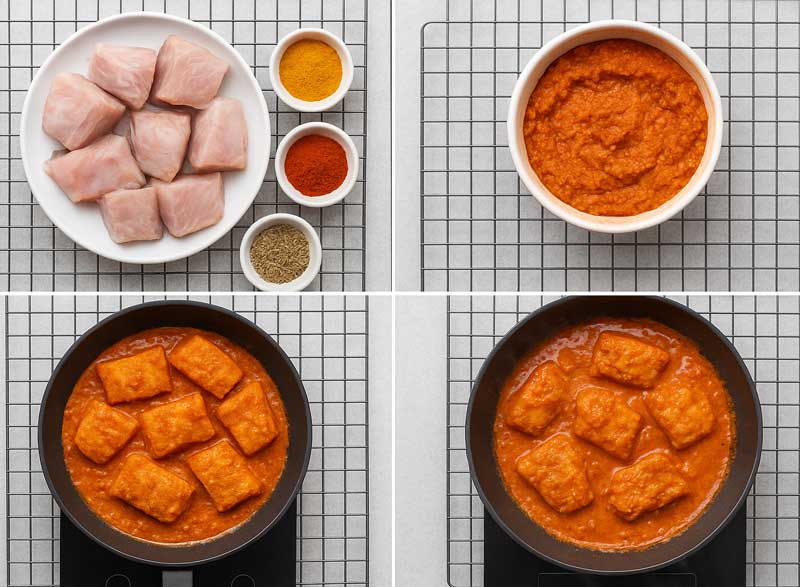
Goan Fish Curry Cooking Tips
Always use fresh fish like kingfish or pomfret and marinate it with a pinch of salt and turmeric for at least 15 minutes before cooking. I recommend using a heavy-bottomed pan or kadhai to cook the curry evenly and prevent it from sticking or burning in pan. When making the Goan curry masala, lightly roast the red chilies, coriander and cumin seeds before blending. Add about half a cup of thick coconut milk towards the end for a creamy finish, or a bit more water if you like a thinner gravy.
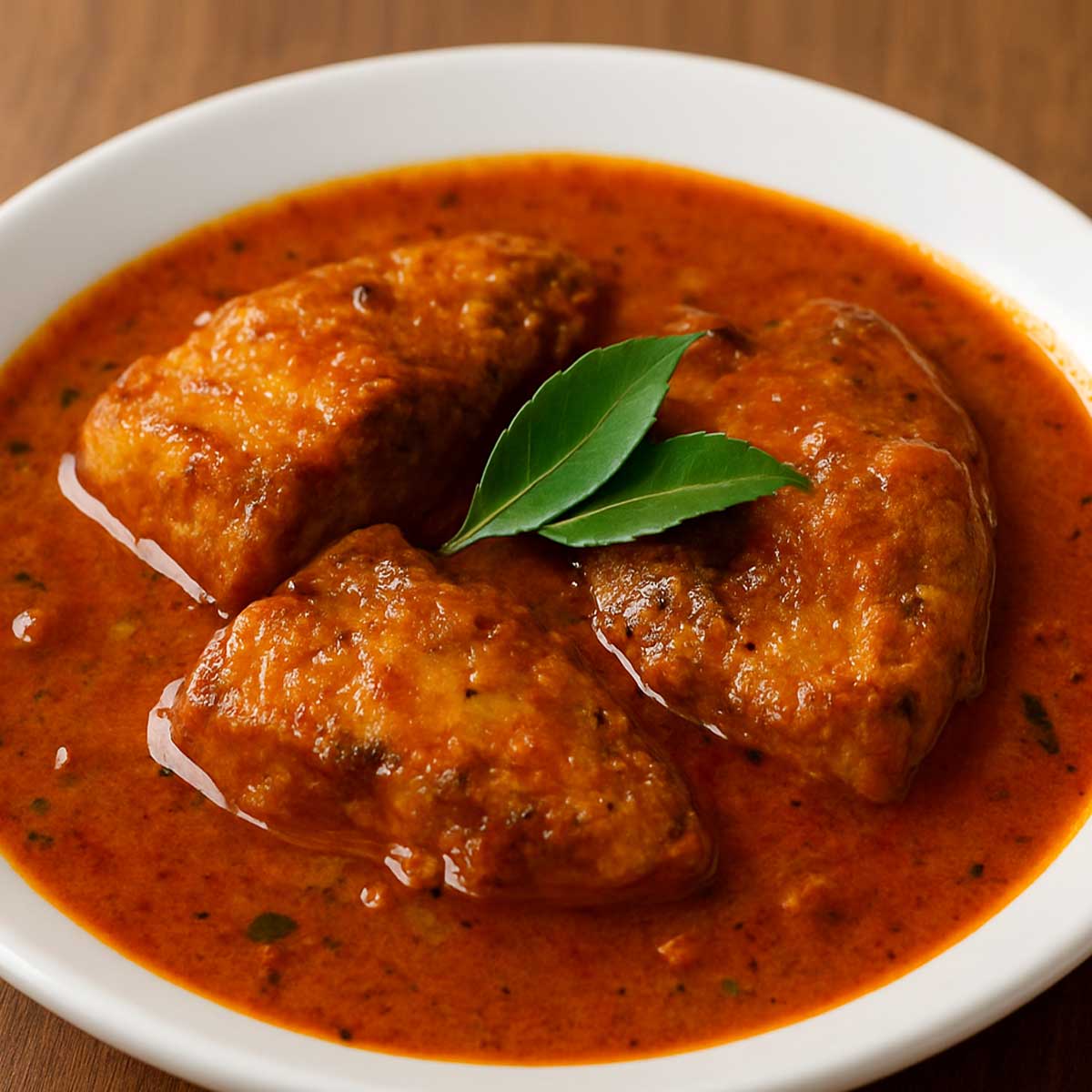
Always simmer the curry on low flame so the fish stays tender and doesn’t break apart. Using coconut oil adds a rich coastal taste in the dish, but you can use vegetable oil if needed. Let the curry rest for 5–10 minutes after cooking so the flavors settle, this small step makes a big difference when serving with steamed rice or Goan poi bread.
Serving Suggestions for Goan Fish Curry
Serve Goan fish curry with plain steamed rice to soak up the flavorful coconut-based gravy, allowing each bite to capture the rich, tangy taste of the coastal spices. Traditional Goan bread, such as soft poi or pav buns, complements the curry perfectly, and adding a simple cucumber, onion, and tomato salad with a squeeze of lemon brings freshness and a satisfying crunch to the meal. For a festive Goan meal, pair the curry with crispy fried fish on the side. Use fresh fish for this seafood recipe, as fresh fish will give your curry a much better taste and texture of the entire seafood experience.
To add more variety and texture, roasted or fried papad (appalam) works wonderfully as a crunchy accompaniment. A light cucumber or mint raita helps balance the heat and spices in the curry. You can adjust spice levels according to your preference, just use fewer chilies or even skip them. The choice is yours.
Frequently asked questions
Traditionally, Goan fish curry is made with kingfish (surmai), pomfret, or mackerel. However, you can also cook this curry with any firm white fish such as snapper, cod, or tilapia.
If you don’t have tamarind or kokum, you can use lemon juice or vinegar for acidity. Amchur (dry mango powder) is another good substitute to bring out a tangy note.
Coconut is an essential ingredient in authentic Goan fish curry but you can skip coconut milk and make a more tangy, spicy version using just ground masala and tamarind. However, coconut milk gives the curry its signature creamy texture and mellow balance.
Goan Fish Curry traditionally uses dried Kashmiri red chilies for color and mild heat. Avoid very spicy varieties unless you prefer extra heat.

Recipe Card

Goan Fish Curry (Indian Fish Curry)
Equipment
- 1 Blender or mixer grinder
- 1 Deep sauté pan
- 1 Spatula
- 1 Knife and chopping board
- 1 Bowl for marination
- 1 Fine sieve for tamarind
Ingredients
- 500 g fish kingfish, pomfret, mackerel, or any firm white fish
- ½ tsp salt for marination + to taste
- ¼ tsp turmeric powder for marination
- 1 tsp turmeric powder for masala
- 1 lemon-sized ball tamarind or 1 tbsp tamarind paste for soaking
- 1 tbsp tamarind pulp for masala
- ½ cup warm water for soaking tamarind
- 1 cup grated coconut
- 5 dried red chilies
- 1 tbsp coriander seeds
- 1 tsp cumin seeds
- 4 garlic cloves
- 1 inch piece ginger
- 1 tsp red chili powder
- 2 tbsp coconut oil
- 2 kokum rinds
- ½ tsp Sichuan pepper
- fresh coriander leaves for garnish
- 1 green chili sliced optional for garnish
- water as needed for curry consistency
Instructions
- Traditionally, authentic Goan fish curry is made with kingfish, pomfret, or mackerel, but you can also use any firm white fish such as tilapia or snapper. Clean the fish thoroughly under running water, remove scales and fins if needed, and cut it into medium pieces for easy cooking.
- Next, marinate the fish. Rub the cleaned fish with a little salt and turmeric powder. Coat each piece evenly and let it rest for a short while. This light marination helps remove any strong smell and adds a gentle flavor base for the curry.
- Soak tamarind in warm water until it softens. Mash it well to extract the pulp and strain the liquid. This tangy tamarind water gives the curry its signature coastal sourness and enhances the Goan flavor.
- Now, prepare the Goan Masala Paste. Blend grated coconut, dried red chilies, coriander seeds, cumin seeds, garlic, ginger, turmeric, tamarind pulp, and red chili powder with a little water until smooth. This fresh homemade masala forms the heart of the curry, giving it a rich, spicy, and creamy texture.
- Heat coconut oil in a deep pan and add the freshly ground masala paste. Sauté on medium heat until aromatic and lightly thickened, stirring well so the flavors develop and release their coastal aroma.
- Add kokum, Sichuan pepper, and a little salt to the masala base, then gently place the marinated fish pieces into the simmering curry. Cover and cook until the fish turns tender, perfectly absorbing the spicy coconut flavors.
- Once cooked, garnish the curry with fresh coriander leaves or a few slices of green chilies. Serve hot with steamed rice, Goan poi bread, or soft basmati rice for a complete coastal Goan meal.
Notes
- If you don’t have tamarind, a splash of lemon juice or a small pinch of amchur (dry mango powder) gives a similar tangy taste.
- Always add the fish towards the end and cook on low heat. Overcooking can make the fish dry or cause it to break apart.
- You can store leftovers in an airtight container in the fridge for up to 2 days. The flavors deepen as it rests, making it even more delicious the next day.

